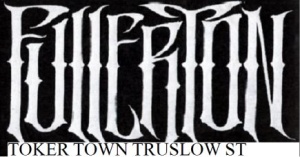
On May 11, the American Civil Liberties Union (ACLU) heralded a “major victory” against an Orange County District Attorney's office (OCDA)-acquired gang injunction, which is a blanket court order against multiple people suspected of belonging to gangs instead of the usual injunctions served on individuals. It was a short-lived victory, at least for those who may have figured District Attorney Tony Rackauckas would discontinue filing gang injunctions. Today, the OCDA announced its ninth and 10th, this time against gangs in Anaheim and Fullerton.
]
The ninth injunction is actually the third against the Anaheim gang, while the Fullerton gang has had more criminal cases brought against it than any other in Orange County, and its anti-gang-activity “Safety Zone” in the North County town becomes the county's largest, according to the OCDA.
Orange County Superior Court Judge Kazuharu Makino signed the Anaheim order, which imposed a 1-square-mile safety zone, on March 30 and the Fullerton injunction and its 7.5-square-mile enforcement area on May 23. It is up to police in each city to enforce the injunctions.

The OCDA says in a statement that the Fullerton
gang's origins date back to the 1940s. That would fit with the Fullerton
Tokers Town gang, the city's largest. Largest also describes the
court-ordered safety zone: south of Chapman Avenue, east of the city border of
Buena Park, north of the 91 freeway and west of Placentia
Avenue.
The Anaheim gang has been around since the 1980s, according to the OCDA, which described the safety zone as: south of Romneya
Drive, east of Brookhurst Street, north of Interstate 5 and west of
Euclid Street.
Under the orders, those deemed “documented gang members” are prohibited from engaging in specific activities within the designated safety zones. These include fighting, trespassing, intimidating or harassing others, using or selling drugs, consuming alcohol in public or possessing guns, other dangerous weapons or burglary tools.
Injunctions also prevent those named members of gangs from associating with one another, which includes standing, sitting, walking, driving, bicycling,
gathering or appearing anywhere in public or public view with each other–unless they are at school or church. Flashing gang hand signs, wearing gang clothing, serving as lookouts or marking up gang territory are also prohibited. Curfews must be strictly observed.
Violating the terms of an injunction can result in criminal charges or sentencing enhancements to other counts faced by a suspected gang member.
It's the suspected part that troubles groups like the ACLU. The Southern California office has fought in courts to invalidate all or parts of gang injunctions on grounds that those identified by law enforcement as gang bangers are denied hearings where they can try to prove they are not. The ACLU and a law firm working pro bono were successful on May 11, when a federal judge ruled the OCDA and Orange Police Department violated due
process rights by denying hearings to those named in the injunction against the Orange Varrio Cypress gang.
Injunctions for gang suspects in Santa Ana, San Juan Capistrano,
San Clemente and Garden Grove have previously been obtained. Crime has dropped significantly within the safety zones ever since, boasts the OCDA.

OC Weekly Editor-in-Chief Matt Coker has been engaging, enraging and entertaining readers of newspapers, magazines and websites for decades. He spent the first 13 years of his career in journalism at daily newspapers before “graduating” to OC Weekly in 1995 as the alternative newsweekly’s first calendar editor.

